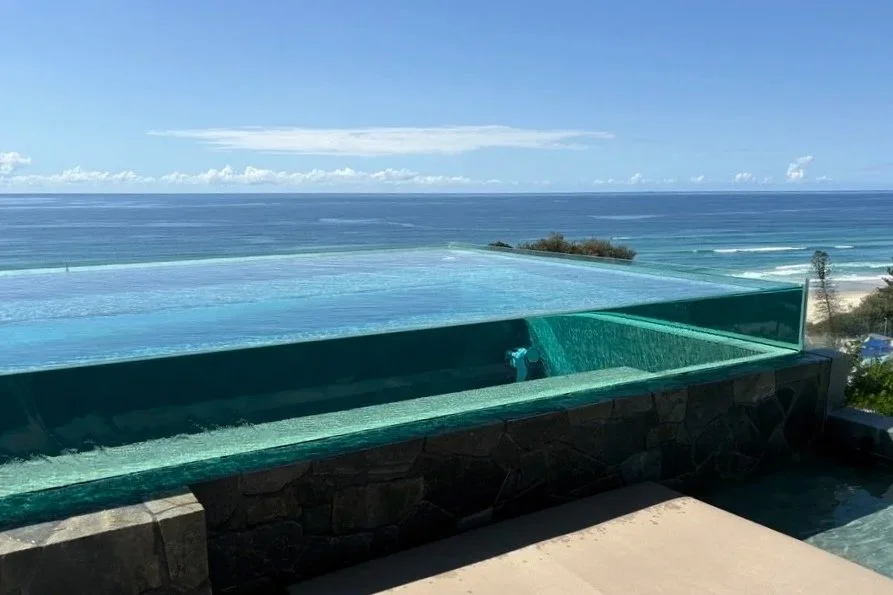Understanding Pool Chemicals: Why Balance Matters
With your pool on show like this one, you want to make sure everything is in perfect balance!
Summer is almost here, and that means more time in the pool. With warmer weather and heavier pool use, keeping your water chemistry balanced is more important than ever. Balanced water not only keeps your pool looking crystal clear but also ensures it’s safe, comfortable, and ready for every swim session.
Here’s a quick guide to the most common chemicals used in pool care and why they matter.
Chlorine (or Other Sanitisers)
Chlorine is the backbone of pool care. It kills bacteria, viruses, and algae, keeping the water safe to swim in. Most pools use a saltwater chlorinator, which converts dissolved salt into chlorine. In some cases, liquid, granular, or tablet chlorine may be added to boost sanitising levels.
pH Adjusters
Keeping your pool’s pH between 7.2–7.6 is key. If it drops too low, the water becomes acidic, which can sting eyes and damage equipment. If it climbs too high, chlorine loses effectiveness, and scaling can occur. We use pH Buffer (sodium bicarbonate) to raise levels and hydrochloric acid to bring them down.
Alkalinity Adjusters
Total alkalinity helps stabilise pH. Too low and your pH can swing wildly; too high and it becomes hard to adjust. Sodium bicarbonate is commonly used to keep alkalinity in the ideal 80–120 ppm range.
Calcium Hardness Adjusters
Calcium levels protect your pool’s surfaces and equipment. Too little, and water becomes corrosive. Too much, and scaling occurs. We raise hardness with calcium chloride or reduce it by diluting with fresh water. Balanced calcium keeps pools looking good—especially pebblecrete pools that can show deposits if levels aren’t managed.
Cyanuric Acid (Stabiliser)
This chemical protects chlorine from being broken down by sunlight, especially important in outdoor pools. The sweet spot is between 30–50 ppm. Too little, and chlorine disappears too quickly; too much, and chlorine becomes less effective.
Algaecides
Algaecides help prevent or treat algae growth, particularly in warm or stagnant conditions. They’re not a replacement for chlorine but a backup tool. Common algae types include green, brown, and black spot.
Shock Treatments (Oxidisers)
Every so often, pools need a “shock.” This involves adding a larger dose of chlorine or a non-chlorine oxidiser to burn off organic contaminants and refresh the water. Shocking is especially useful when there’s a gap between total and free chlorine levels, indicating contaminants are tying up sanitiser.
Why It Matters
Balanced water chemistry keeps your pool safe to swim in, clear to look at, and easy on your equipment. It also means fewer headaches and less expense in the long run. That’s why regular servicing and water testing are essential—not just in summer, but all year round.
If you’d rather leave the balancing act to a pro, we’re here to help.
📞 Call Jamie on 0407 696 002 to book your next service.

